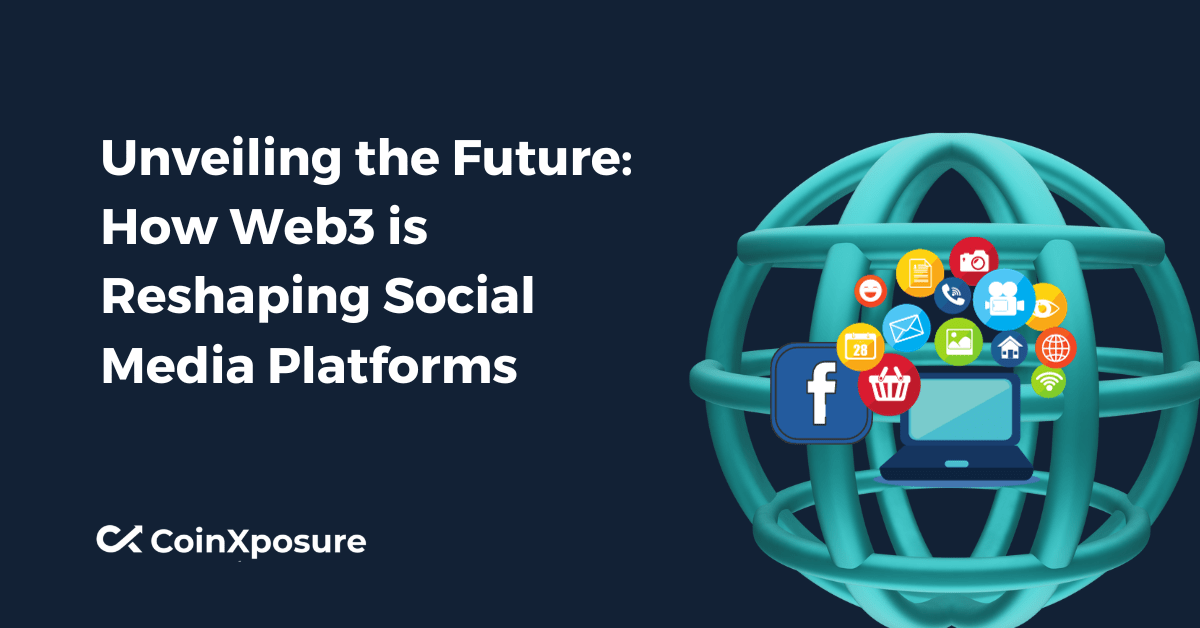
Unveiling the Future – How Web3 is Reshaping Social Media Platforms
In the ever-evolving landscape of digital connectivity, the emergence of Web3 stands as a groundbreaking force poised to redefine the fabric of social media platforms.
This exploration delves into the transformative influence of Web3, examining how decentralization, blockchain technology, and novel incentive structures collectively reshape the user experience and redefine the essence of social interaction online.
As we unveil the future, we navigate the shifts from centralized control to user empowerment, exploring the promises, challenges, and the profound impact of Web3 on the future landscape of social media.
Understanding Web3
Web3 represents a paradigm shift in the digital realm, emphasizing decentralization, transparency, and user empowerment. At its core, Web3 leverages blockchain technology to create a more equitable and open Internet.
Unlike its predecessor, Web2, where power is concentrated in a few centralized entities, Web3 aims to distribute control and ownership among users.
Smart contracts, executed on blockchain platforms, are pivotal in automating processes and enabling trustless interactions.
Understanding Web3 involves grasping its decentralized nature, blockchain foundations, and the transformative potential for reshaping various digital experiences.
Current State of Social Media
The current state of social media is characterized by the dominance of centralized platforms that mediate user interactions and content distribution.
Giants like Facebook, Twitter, and Instagram wield substantial influence, but this centralized control raises concerns regarding data privacy, content moderation, and censorship.
Users often surrender ownership of their data to these platforms, contributing to growing apprehensions about security and transparency.
As the demand for more user-centric and privacy-focused solutions intensifies, there is a palpable need for innovation in the social media landscape.
This context sets the stage for exploring how Web3 is poised to disrupt and reshape the current dynamics of social media.
The Emergence of Web3 in Social Media
The emergence of Web3 in social media signifies a shift towards decentralized and user-centric platforms. This evolution is characterized by the rise of decentralized social media networks that leverage blockchain technology to empower users with greater control over their data.
These platforms often utilize smart contracts and cryptocurrencies to introduce novel incentive mechanisms, rewarding content creators and users for their contributions.
Tokenization plays a significant role, enabling the creation of digital assets and fostering a more equitable distribution of value within the social media ecosystem.
Moreover, the emphasis on interoperability facilitates seamless connectivity between different platforms, breaking down silos and offering users a more integrated online experience.
Web3 in social media promises to address data privacy, censorship, and centralized control, marking a departure from traditional models and paving the way for a more decentralized, transparent, and user-driven digital landscape.
Challenges and Considerations of Web3 in Social Media
As Web3 reshapes social media, several challenges and considerations emerge:
- Scalability and Technical Hurdles
- Regulatory Challenges and Legal Implications
- User Adoption and Mainstream Acceptance
Scalability and Technical Hurdles
Addressing the scalability limitations of blockchain networks to accommodate the growing user base.
Overcoming technical barriers and ensuring user-friendly interfaces for widespread adoption.
Regulatory Challenges and Legal Implications
Navigating the evolving regulatory landscape surrounding cryptocurrencies and decentralized technologies.
Mitigating legal uncertainties and ensuring compliance with diverse global regulations.
User Adoption and Mainstream Acceptance
Encouraging users to transition from familiar centralized platforms to decentralized alternatives.
Building trust in the security and reliability of Web3 platforms for mainstream acceptance.
Addressing these challenges is crucial for successfully integrating Web3 into social media, ensuring a seamless, secure, and widely adopted decentralized ecosystem.
Future Prospects Web3 in Reshaping Social Media
The future prospects of Web3 in reshaping social media are poised for profound transformations:
- Evolution of Web3 Social Media
- Impact on Traditional Platforms
- Shaping Online Interactions
Evolution of Web3 Social Media
Continued development of decentralized social media platforms with improved features and functionalities.
Integration of emerging technologies to enhance user experiences and facilitate richer interactions.
Impact on Traditional Platforms
Increasing competition may drive traditional platforms to adopt Web3 principles, fostering innovation and user empowerment.
Potential challenges for centralized platforms as users seek alternatives that prioritize decentralization and ownership.
Shaping Online Interactions
Redefining the dynamics of online interactions by emphasizing user control, privacy, and a fair distribution of value.
Facilitating new content creation, collaboration, and community building through decentralized incentives.
The future of Web3 in social media holds promise for a more inclusive, transparent, and user-driven digital landscape, with potential ripple effects across the broader internet ecosystem.
Conclusion
The ongoing paradigm shift towards Web3 is poised to revolutionize social media, ushering in an era of decentralization, user empowerment, and innovative interaction.
As we navigate this transformative journey’s challenges and considerations, the potential benefits are clear: decentralized social media platforms offer users greater control over their data, introduce novel incentive structures, and strive for a more inclusive and transparent online environment.
While scalability, regulatory hurdles, and user adoption remain challenges, the future prospects suggest a dynamic landscape where Web3 principles shape the evolution of social media.
The impact on traditional platforms may lead to reevaluating centralized models, fostering competition and innovation.
As we unveil this future, the trajectory of Web3 in social media holds the promise of redefining how we connect, share, and engage online, steering towards a more decentralized, user-centric, and equitable digital experience.





